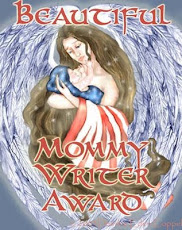Since most people have heard about and even written an “acrostic” poem, it’s often an overused format (But then, so is haiku). I wasn’t going to use it this year, BUT, then you would miss reading my poetry story about Fiona and the Snake Poem from when I was teaching English in China back in 2016 ~ super cute. Just sayin’ (Even if you have read the story before, I love reading it again, and again – you might too)!! Cracks me up every time – it’s at the end of this post.
So, there are two ways one can write an acrostic poem. (One is using
short sentences starting with the letter on the left for each line and the
other is to write single words starting with the letter on the left for each
line.
It’s a rather simple pattern and can be quite fun to do. You can choose
any word to be your base – a word or name that you write down the-left hand
side of your paper, one letter under another.
SO, it
only takes a few steps to get started with an ACROSTIC POEM ~
1. Choose a name or the object of your poem.
2. Write that name or that word down the left-hand side of your paper vertically, generally using all capital letters.
3. Use a single word or start each sentence of your poem with the capital letter on that line.
4. No need to worry about rhyming or counting syllables or anything.
5. Each line can be whatever length you choose, from one word to an actual sentence.
Example: (One
word)
One word/line acrostic for the word “MOTHER” ~
Magical
Optimistic
Or, use
the first letter as the beginning of a sentence instead of a single word, as
Fiona did below.
Fiona’s
Snake Poem:
In 2016 I went to China to teach English at an “English Camp” during
their winter break. I have shared this before but I really can’t let this
poetry form pass without sharing this delightful experience once again. I had a
14-year-old student named “Fiona.” I explained how to write an acrostic poem
and suggested to the students that they choose a favorite animal for their
poem. I gave additional details and they got busy.
Soon they were showing me their poems. They did a wonderful job. Then
Fiona turned in her poem:
Snow is falling down.
No one wants to stay outside.
A little girl stands at my front door.
Knocks it with a little cry.
Early afternoon, she falls asleep in my room.
I read it and told her that it was a lovely poem but it had nothing to
do with a snake. She replied, “But I wrote ‘snake’ down the left hand side.”
So I explained that the poem also needed to be ABOUT a snake if that
was the word she chose. Fiona said, “Okay,” took the paper back, added a few
words and turned it back in…
Here is what she added to that last line following “Early afternoon, she falls
asleep in my room … and then she turned into a snake.”
I loved it!! Love her!! I laughed so hard. It is a cherished memory. And now, you can enjoy it too. Cheers!!
Whatcha’ got?
PLEASE REMEMBER ~ any poetry found on this blog, written by me, is my
personal property and may not be used without my permission, other than sharing
it as an example in a lesson or to read it to someone. The same goes for any
poems that are shared in the comments of this blog or elsewhere online as a
result of this challenge. They are the creative property of the person who
writes them. These poems are their original work and no one may use them
without their permission. It is understood that they own the copyright to them
as soon as they create them and especially once they post them. Thanks so much!
*** Also, if you choose to
post your poems on your own blog or elsewhere on social media ~ that’s awesome.
But PLEASE don’t just copy and paste my daily instructions, but rather post
your poem on your blog or your FB wall or wherever AND LINK BACK TO EACH DAY’S
SPECIFIC BLOG POST for others to come here to read the instructions. I’ve spent
considerable time researching the poetry forms and writing them up to share
with you. Thanks for respecting my work.
Photo credit
- Pixabay











.jpg)


